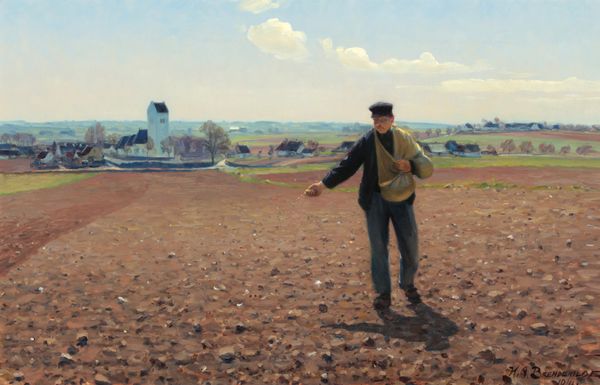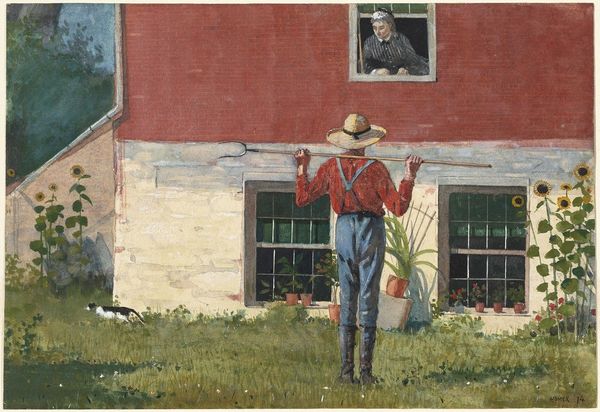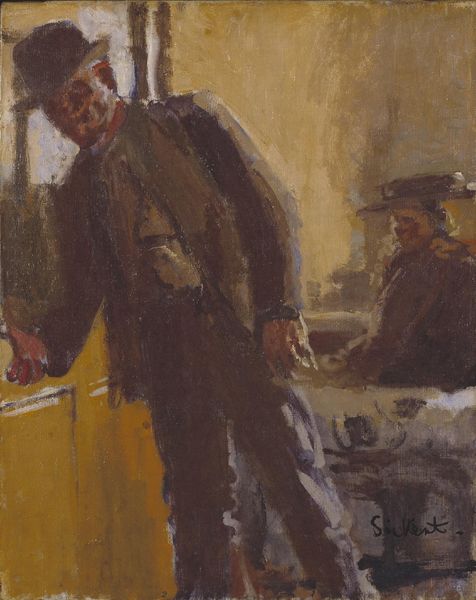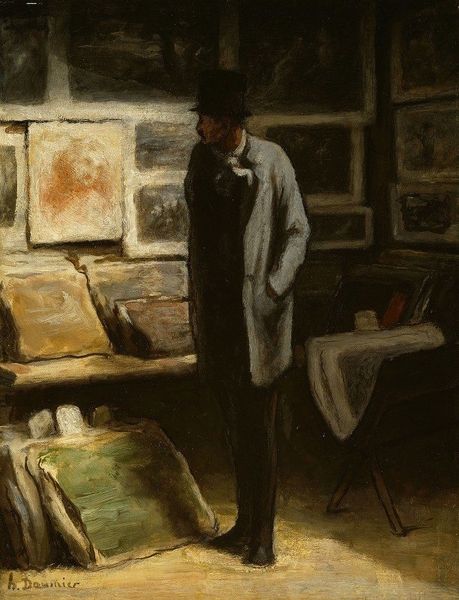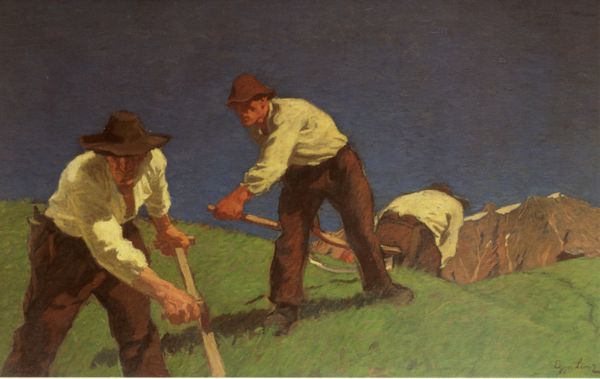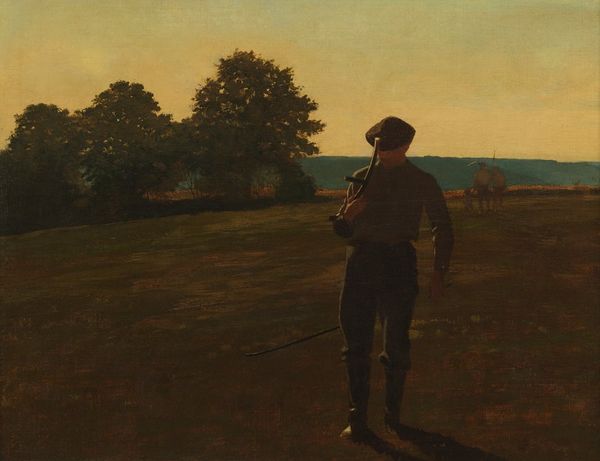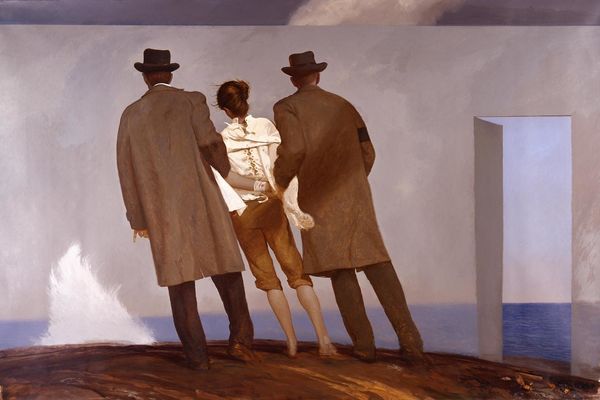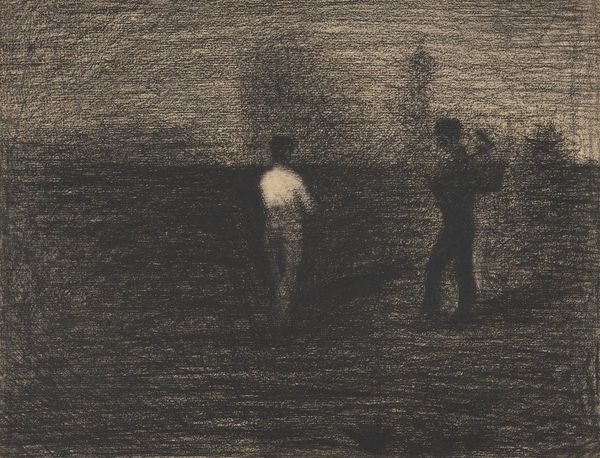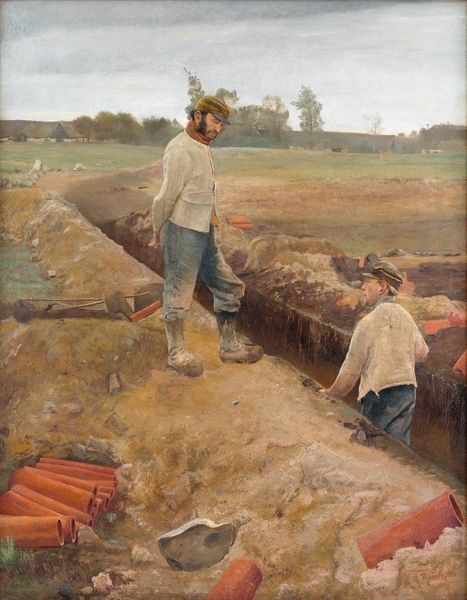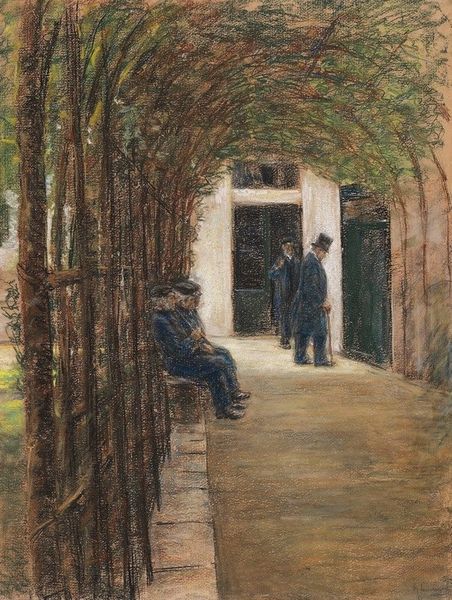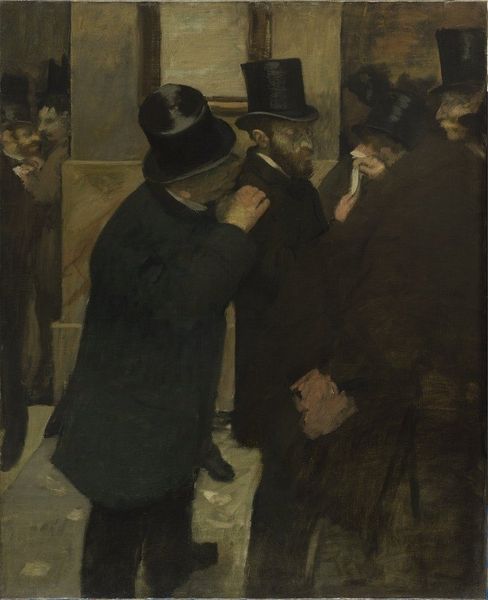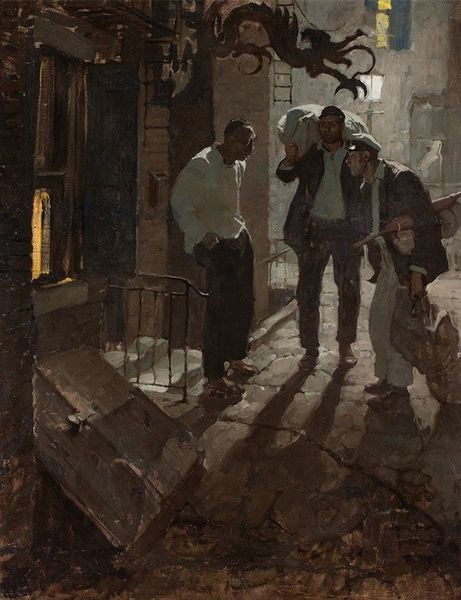
Copyright: Public domain
Curator: What strikes me immediately is the raw materiality of this painting—the almost brutal honesty of the brushstrokes, especially in rendering the brick wall. You can practically feel the rough texture. Editor: And it feels oppressive, doesn’t it? Looking at Max Klinger's "Spaziergänger (der Überfall)", painted in 1878, one can’t help but think of structures of power and surveillance. The looming brick wall divides space, delineates control... it speaks to issues of class, I think, maybe even race. Curator: It is fascinating how Klinger uses the oil paint itself to create this stark division. The smooth, almost flat expanse of the wall contrasts sharply with the textured ground and the roughly rendered figures. There's an intentional friction there in the making itself, wouldn’t you say? Editor: Absolutely. Considering the time, what are we to make of these figures? Are they workers, caught in a moment of labor under the gaze of someone...superior? It's impossible not to read these bodies as marked by their social and economic position. I’m reminded of critiques of the rising industrial state during this period in Germany, the way power operated visually and physically. Curator: Let’s consider Klinger’s own biography. His struggles to gain recognition as an artist, despite academic training, likely influenced his emphasis on labor, on the material realities of making art, you know. The surface texture, the way it shows that human touch. That itself is commentary. Editor: It begs the question: Whose labor are we seeing represented and whose is erased? Those standing by the wall appear static, seemingly observing those laboring, thus further demonstrating established societal divisions. It mirrors how art historically, the stories of the marginalized were systemically erased in favor of an elite point of view. Klinger seems to hint at it with his painting here, and almost, perhaps unwillingly, perpetuates it. Curator: But consider, doesn’t he bring visibility to that very erasure? By so palpably showing the signs of labor, in depicting figures often relegated to the periphery of "high" art? It’s not an erasure, it’s about placing them at the very center of our attention through those thick textures. Editor: Yes, I can appreciate the artist trying to highlight marginalized labor, but one could consider the work lacking in that full visibility. We only know these men by their labor, but do not truly understand them as complete people outside of this scene. Curator: Perhaps Klinger offers a space to then reflect and discuss, in the modern world, ways we can challenge societal constructs such as these. Editor: Yes, certainly. And how even what seems at first glance a simple landscape painting is dense with implications about societal power, visibility, labor, and its physical mark on individuals and society as a whole.
Comments
No comments
Be the first to comment and join the conversation on the ultimate creative platform.
